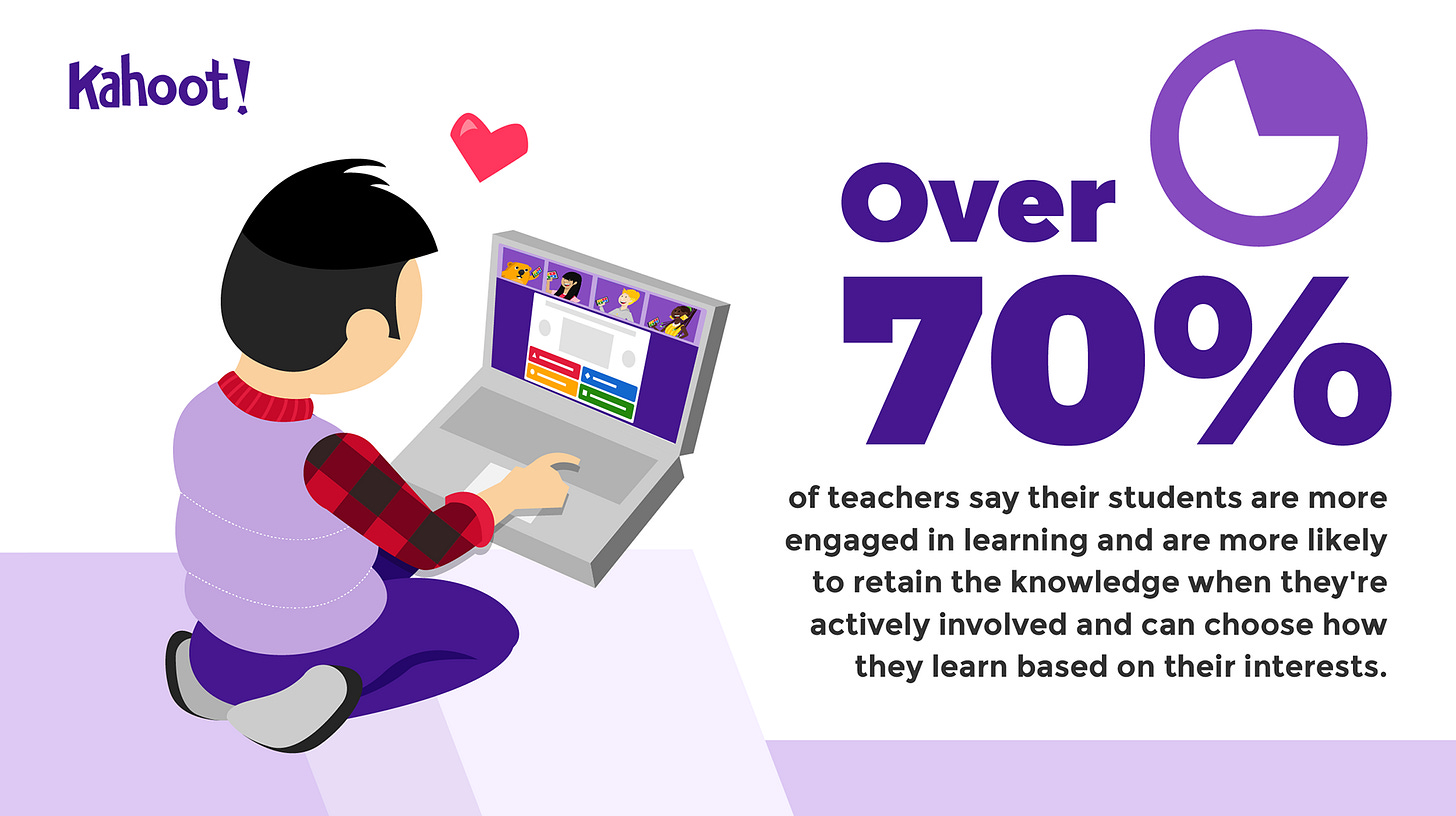After New Orleans travel delays, the July Fourth holiday, and a strident case of COVID, the Hogan Report is back to wade through the issues and insights from last month’s ISTE conference! I had the pleasure to meet Louisa in person at the show but followed up virtually this week regarding a new survey of nearly 8,000 U.S. educators Kahoot! released today.
In addition to her full-time role at the Kahoot! Group, Louisa teaches a graduate course on EdTech design at Harvard University. Her insights are obviously worth the listen but you can also scroll below for some highlights as well. The main takeaways?
Student engagement is not back to pre-pandemic levels in most classes.
LR: I think [this survey result] just really highlights what students have gone through these difficult couple of years. So many students have gone through so much trauma at home, of all different kinds. So it's not only that they've kind of forgotten how to sit still and forgotten how to tolerate things. It's that some of these pedagogies weren't the best way to support them before and now these pedagogies can't cut it at all.
I think that really looking at approaches like project-based learning and playful learning, game-based learning…I think some of these practices are really important ways to make connections between what students are doing at home in their free time and how they want to be learning.
Choice and active involvement are key to focus and knowledge retention.
LR: Research and the learning sciences have shown for a long time that [student-centered] pedagogies are better for students. The students are more motivated. The pedagogies lead to deeper learning, more transformative learning experiences. But it's just so great to see that teachers also perceive this, that teachers also have this sense that through more student-centered pedagogies and more active learning and playful learning, they can see the results of it being better for students.
It's one thing for researchers and writers to say, “Oh, this is what we should do.” But if teachers are seeing it themselves, then they're much more likely to be motivated to take those steps, to shift their practice, which is not always easy.
Technology powers student-centered learning through play
It's so important that we all recognize that ed tech and education in general is a complex ecosystem, right? Nobody is going to solve education with one tool or one platform. Kahoot! partners with a lot of different educational organizations and has integrations with other ed tech tools. It's really about how do these ed tech tools fit together to create a more meaningful experience for students.
Some details on Kahoot!:
Launched in 2013, Kahoot!’s vision is to build the leading learning platform in the world. Since launch, Kahoot! has hosted hundreds of millions of learning sessions with 8 billion participants (non-unique) in more than 200 countries and regions. The Kahoot! Group includes Clever, the leading US K-12 EdTech learning platform, together with the learning apps DragonBox, Poio, Drops, Actimo, Motimate, and Whiteboard.fi. The Kahoot! Group is headquartered in Oslo, Norway with offices in the US, the UK, France, Finland, Estonia, Denmark, Spain and Poland.














Share this post